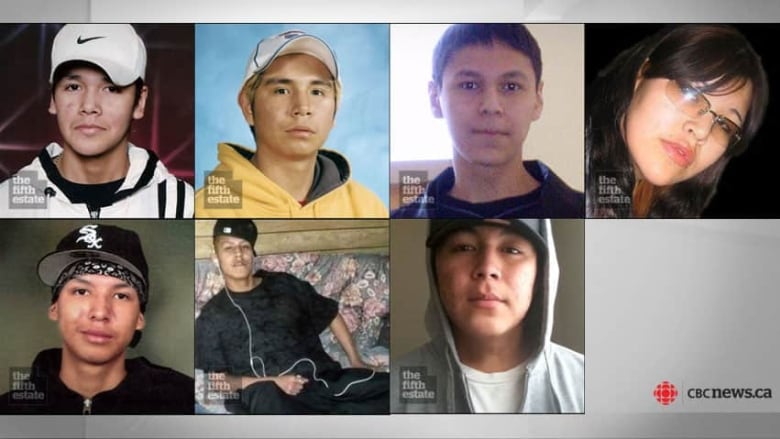First Nations student deaths inquest: What we know now
Inquest into the deaths of 7 First Nations students in Thunder Bay moves into phase 2 on Monday

A coroner's inquest in Thunder Bay, Ont., moves on totestimony from expert witnesses on Monday after hearing months of evidence detailing the deaths of seven First Nations students in the city.
The inquest is examining the deaths of Jethro Anderson, Curran Strang, Paul Panacheese, Robyn Harper, Reggie Bushie, Kyle Morriseau and Jordan Wabasse.
All of the students came from remote First Nations to attend high school in Thunder Bay. They died between 2000 and 2011.
- First Nation student deaths inquest: 5 things revealed so far
- IN DEPTH: First Nations student deaths inquest
- Reporter's Notebook: A mother's grief laid bare at Thunder Bay inquest
The first phase of the inquest began in October with the death of each student being examined individually. The second phase begins on Monday with 12 days of testimony from experts who are expected to put the students' experiences into context for the jury.
The final phase of the inquest in March will include closing addresses, instructions to the jury and their recommendations for keeping youth from remote First Nations safe in Thunder Bay.
Here are five things that have been revealed since October:
- 1. No one knows how five First Nations teens ended up in the water
The bodies of five of the boys who died were found in rivers that flow through Thunder Bay.
Four of the boys were drinking in the company of other students near a riverwhen they were last seen, but none of the witnesses who testified at the inquest could say how any of the boys came to be in the water.
In regards to Kyle Morriseau, whose body was found in the McIntyre River in2009, coroner's counsel Karen Sheatold a witness:"We've hearda lot of evidence and I think we all agree that no one knows how Kyle got into the river."
Jordan Wabasse, whose body was found in the Kaministiquia River in 2011, was last seenmore than two kilometres away from the river, near his boarding home. None of the witnesses could explain why he would have been near the river.
- 2. Investigations into two of the deathsremain open
Thunder Bay police revealed that their investigations into the deaths of Kyle Morriseau and Jordan Wabasse remain open.
Police records show both cases as "complete, solved, non-criminal", but Insp. Don Lewis testified that both cases remain open, although not actively investigated.
- 3. Friends, family say none of the teens intended to harm themselves
The inquest must decide whether the cause of each of the deaths is suicide, homicide, accidental or undetermined.
In each case, witnesses have been asked about the outlook and attitude of the student in the weeks and months before their death.
None of the witnesses have identified any suicidal behaviour in the students.
For example, Curran Strang, who died in 2005, was described by his boarding home parent as "a very nice young boy, very out-going, easy to talk to, always joking."
- 4. Several of the students had contact with policein the months prior to their deaths
Nearly all of the students who died had interacted with Thunder Baypolice outside of school hours.At least two of the students spent time in custody for underage drinking in the weeks leading up to their deaths.
A lawyer for Thunder Bay police said the police service is reconsidering how it deals with intoxicated students.
"It raises a broader issue which is identifying young people at risk," Brian Gover said. "That's something that we need to take away from the inquest in particular and learn as much as we can about it."
- 5. Missing persons reports for several of the students contain errors
The Thunder Bay policemissing person report for Jordan Wabasseidentified the wrong date for when he was last seen.
Curran Strang was identified on the missing person's report as a "frequent runaway," while Jethro Anderson's missing person's report said the 15-year-old had an alcohol dependency after his aunt told police she had caught him drinking once before.
The inquest resumes on Monday morning.
Watch live streamingvideo from the First Nation student deaths inquest here.
Follow CBC Thunder Bay reporter Jody Porteras she tweets from the inquest.












_(720p).jpg)


 OFFICIAL HD MUSIC VIDEO.jpg)
.jpg)



























































































